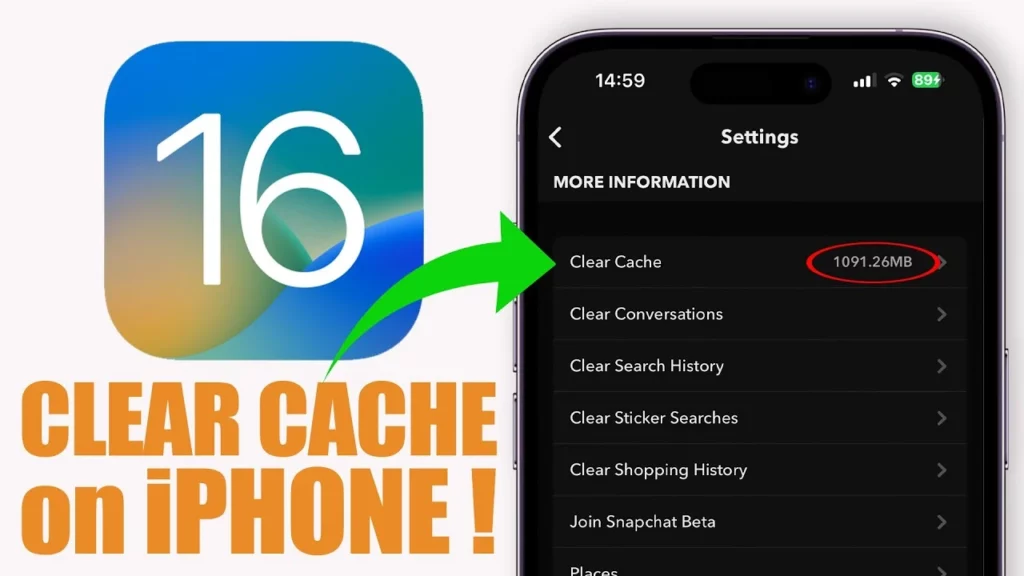As we increasingly depend on smartphones, gathering stored data becomes unavoidable. Cache files serve as momentary storage, aiding apps in quicker loading by retaining regularly used information. Nevertheless, with time, these caches have the potential to consume valuable storage space and, in turn, may adversely affect the swiftness of your iPhone.
However, over time, these caches might occupy important storage capacity and potentially lead to a decrease in your iPhone’s space.
Nevertheless, as time progresses, these caches may accumulate in valuable storage, potentially causing a reduction in your iPhone’s speed. This assist will walk you through the steps to clear the cache on your iPhone, ensuring peak performance and effective storage management.
Understanding iPhone Cache
Before delving into the clearing process, it’s crucial to understand the types of cache on your iPhone. The two primary types are app cache and system cache. App cache is generated by individual applications to store data temporarily, while system cache is accumulated by the iOS system itself. Both contribute to the overall cached data on your device.
Clearing App Cache
Safari Cache:
- Open the “Settings” on your iPhone.
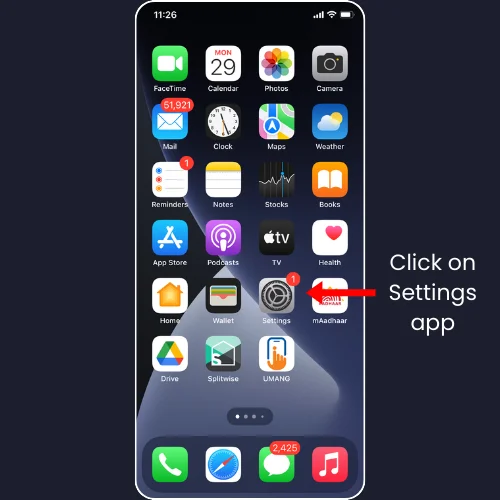
- Scroll down and tap on “Safari.”
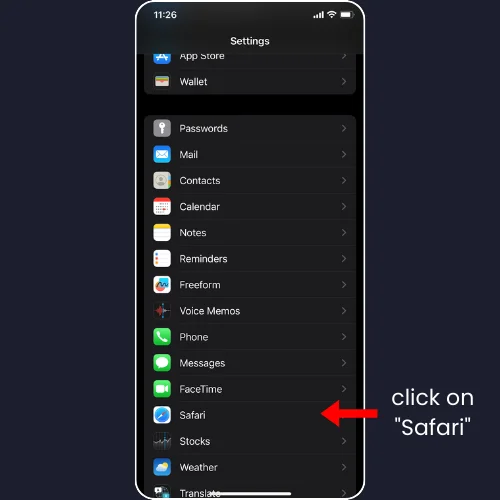
- Scroll to the bottom and select “Clear History and Website Data.”
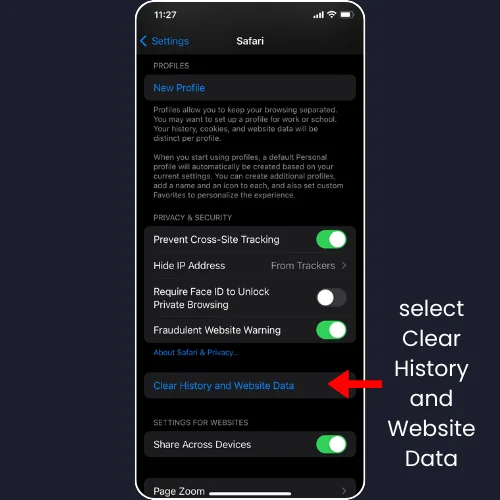
- Confirm your choice by tapping “Clear History and Data.”
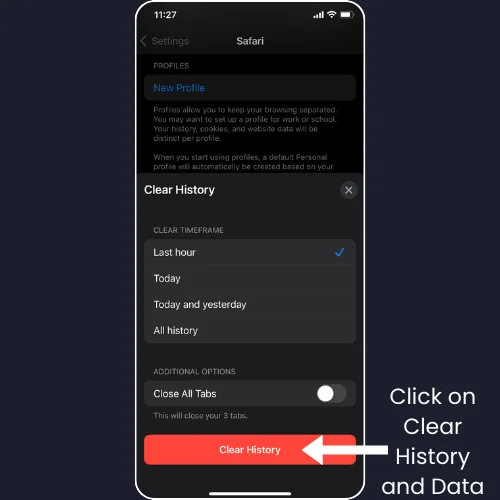
Clearing System Cache
Clearing the system cache on an iPhone is a bit more involved and not as simple as clearing the app cache. Yet, you can do this by performing a soft reset:
Soft Reset:
- For iPhone 8 and latest models: Promptly tap and release the volume up button, then repeat with the volume down button. Ultimately, press and grasp the side button until the Apple logo comes into view.
- For both iPhone 7 and 7 Plus: Press and keep both the side and volume-down buttons pressed simultaneously until the Apple logo appears.
- For iPhone 6s and earlier models: Hold down both the home and the top (or side) buttons simultaneously until the Apple logo becomes visible.
Clearing App Cache Automatically:
- If you find manual cache clearing inconvenient, consider using apps designed to automate this process. Some apps, available on the App Store, claim to efficiently manage and clear app caches, providing a hassle-free solution for users who prefer automation.
Benefits of Clearing Cache
- Improved Performance: Clearing the cache aids in enhancing the smooth operation of apps by eliminating unnecessary data that might be causing them to slow down.
- Freeing Up Storage Space: Cache files can accumulate and take up valuable storage space over time. Clearing them ensures you have more room for essential data and apps.
- Privacy Enhancement: Deleting the cache makes your privacy better by getting rid of stuff like login details and what you’ve been browsing.
- Preventive Measures: To minimize the need for frequent cache clearing, consider the following preventive measures.
- Regularly Update Apps: Make sure your apps are always updated to get the newest improvements and bug fixes.
- Limit Background App Refresh: In Settings, click on General > Background App refresh and turn it off for apps that don’t need updates all the time.
- Manage Safari Settings: Adjust Safari settings by going to Settings > Safari and disabling features like “Preload Top Hit” and “Load Remote Images.”
Conclusion
Wiping the cache on your iPhone is a straightforward process that can significantly boost its performance and maximize storage efficiency. Understanding the diverse types of cache, following the manual clearing steps, and implementing preventive measures ensures your iPhone runs smoothly, delivering a seamless user experience.
Plus, don’t forget to check out how to unlock your iPhone with an Apple Watch for added convenience. Consistent maintenance of your device ensures it remains a trustworthy and efficient companion throughout your daily activities.



